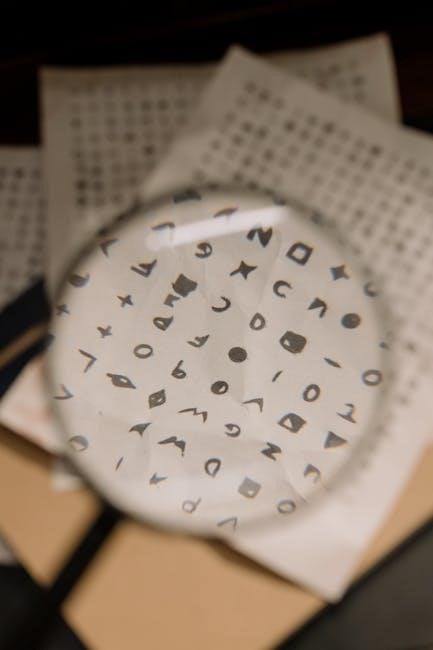Adinkra symbols have origins in West Africa, specifically Ghana, with
historical
significance and cultural importance, representing values and beliefs through unique designs and patterns, used to convey messages and tell stories effectively always.
Definition and Origin
Adinkra symbols are a set of visual symbols that originated from the Akan people of Ghana and the Ivory Coast in West Africa. The term Adinkra literally translates to farewell or goodbye in the Twi language, which is spoken by the Akan people. These symbols were originally designed by the Asante craftsmen of Ghana and have been used to convey messages and tell stories through their unique designs and patterns. The Adinkra symbols have a rich history and cultural significance, and their use has been passed down through generations. They are often used to represent values and beliefs, and are an important part of the Akan culture and tradition. The symbols are typically printed on cotton fabric to produce Adinkra cloths, which are worn on special occasions and are used to convey messages of wisdom, knowledge, and cultural heritage. The Adinkra symbols are a testament to the rich cultural heritage of the Akan people and continue to play an important role in their culture and tradition. They are a unique and meaningful way to communicate and connect with others.
Importance of Adinkra Symbols
The importance of Adinkra symbols lies in their ability to convey complex messages and values through simple yet meaningful designs. They are a vital part of the Akan culture and tradition, and their use is still prevalent today. The symbols are used to teach important life lessons and to convey wisdom and knowledge. They are also used to represent the history and cultural heritage of the Akan people. The Adinkra symbols are a source of pride and identity for the Akan people, and their use is a way to connect with their ancestors and their cultural roots. The symbols are also used in various aspects of Akan life, including art, literature, and music. They are a unique and meaningful way to communicate and express oneself, and their importance extends beyond their cultural significance to their aesthetic and artistic value. The Adinkra symbols are a treasure trove of wisdom and knowledge, and their importance cannot be overstated.

Meanings of Adinkra Symbols

Adinkra symbols have unique meanings, representing values, beliefs, and concepts, conveyed through
distinctive designs always.
Examples of Adinkra Symbols
Some notable examples of Adinkra symbols include Sankofa, which represents the importance of learning from the past, and Akoma, which symbolizes patience and tolerance.
These symbols are often used to convey messages and tell stories, and are typically printed on cotton fabric to produce Adinkra cloths.
The Adinkra symbols are also used in various logos and emblems, demonstrating their significance and importance in African culture.
For instance, the Oyoko clan uses the Sankofa symbol as their clan emblem, while many universities in Ghana incorporate Adinkra symbols into their logos.
The use of Adinkra symbols in these contexts reflects their rich cultural heritage and the values they represent, such as knowledge, life-long education, and wisdom.
Overall, the examples of Adinkra symbols demonstrate their unique meanings and significance in African culture, and their continued use in various contexts.
Symbolic Meanings
The symbolic meanings of Adinkra symbols are diverse and complex, reflecting the rich cultural heritage of the Akan people.
Each symbol has a unique meaning, such as the Ananse Ntontan symbol, which represents wisdom and creativity, while the Akoko Nan symbol represents mercy and nurturing.
The Nsoromma symbol, which means “child of the heavens”, is a symbol of guidance and protection.
The Adinkra symbols also convey moral and philosophical messages, such as the importance of patience, tolerance, and knowledge.
The symbolic meanings of Adinkra symbols are often layered and multifaceted, allowing for multiple interpretations and understandings.
Overall, the symbolic meanings of Adinkra symbols provide a deeper understanding of the cultural and historical context in which they were created, and continue to inspire and educate people today with their rich and complex meanings and significance.

Usage of Adinkra Symbols
Adinkra symbols are used in various contexts, including logos, emblems, and artwork, conveying meaningful messages and values effectively always with unique designs.
Logos and Emblems
Adinkra symbols are widely used in logos and emblems, particularly in Ghana, where they originated. Many organizations, including universities, incorporate Adinkra symbols into their logos to convey meaningful messages and values. The use of Adinkra symbols in logos and emblems is a way to connect with the rich cultural heritage of the Akan people. The symbols are often combined with other design elements to create a unique and distinctive visual identity. The Adinkra symbols used in logos and emblems are carefully selected to reflect the values and mission of the organization. For example, the Sankofa symbol, which represents the importance of learning from the past, is often used in educational institutions. The use of Adinkra symbols in logos and emblems is a way to promote cultural awareness and understanding, and to showcase the beauty and significance of African cultural heritage. Adinkra symbols add depth and meaning to logos and emblems, making them more than just visual identifiers.
University Logos
Many universities in Ghana incorporate Adinkra symbols into their logos, reflecting the country’s rich cultural heritage. The use of Adinkra symbols in university logos is a way to promote African culture and values, and to connect with the local community. University logos featuring Adinkra symbols are often designed to convey a sense of tradition, wisdom, and excellence; The Adinkra symbols used in university logos are carefully selected to reflect the institution’s mission and values. For example, the Akoma symbol, which represents patience and tolerance, may be used in a university logo to promote these values. The use of Adinkra symbols in university logos is also a way to differentiate the institution from others and to create a unique visual identity. By incorporating Adinkra symbols into their logos, universities in Ghana are able to showcase their cultural heritage and promote cross-cultural understanding. This unique approach to logo design sets them apart from other institutions.
Adinkra symbols convey meaningful messages and values, representing African culture and heritage, with unique
designs
and patterns, always used to educate and inspire people effectively online.

Adinkra symbols are a collection of unique designs and patterns that originated in West Africa, specifically in Ghana, with a rich history and cultural significance, representing values and beliefs of the Akan people through various symbols. The symbols are used to convey messages and tell stories, with each symbol having its own meaning and significance, making them a powerful tool for communication and education. The use of Adinkra symbols is not limited to traditional settings, as they are also used in modern contexts, such as in logos and emblems, to promote ideas and causes, and to represent African culture and heritage. The symbols are also used to decorate clothing and textiles, making them a popular choice for fashion and design. Overall, Adinkra symbols are an important part of African culture and history, and continue to play a significant role in modern times, with their meanings and significance being passed down from generation to generation through various forms of media and education.
Final Thoughts
The study of Adinkra symbols is a fascinating field that offers insights into the culture and history of the Akan people, with a wealth of information available in PDF formats online, providing a comprehensive guide to their meanings and significance. The symbols are a testament to the rich cultural heritage of Africa, and their continued use in modern times is a reflection of their enduring importance. As we conclude our exploration of Adinkra symbols, it is clear that they are more than just simple designs, but rather a complex system of communication that conveys deep meanings and values. The use of Adinkra symbols in education and cultural exchange programs can help to promote cross-cultural understanding and appreciation, and their incorporation into modern design and art can help to preserve their cultural significance for future generations. By exploring and learning about Adinkra symbols, we can gain a deeper understanding of African culture and history, and appreciate the beauty and significance of these unique symbols.